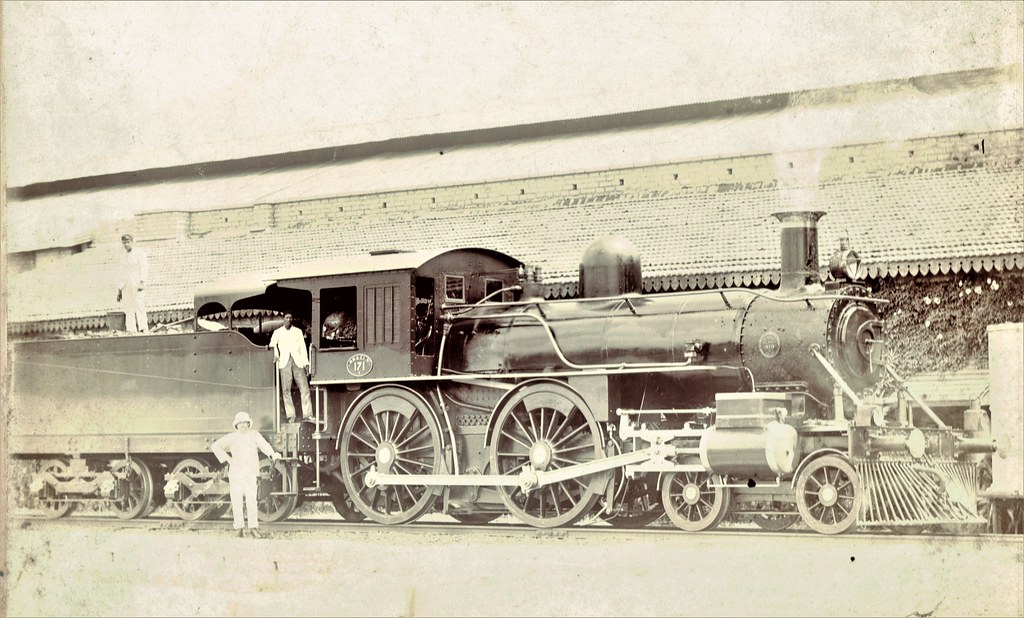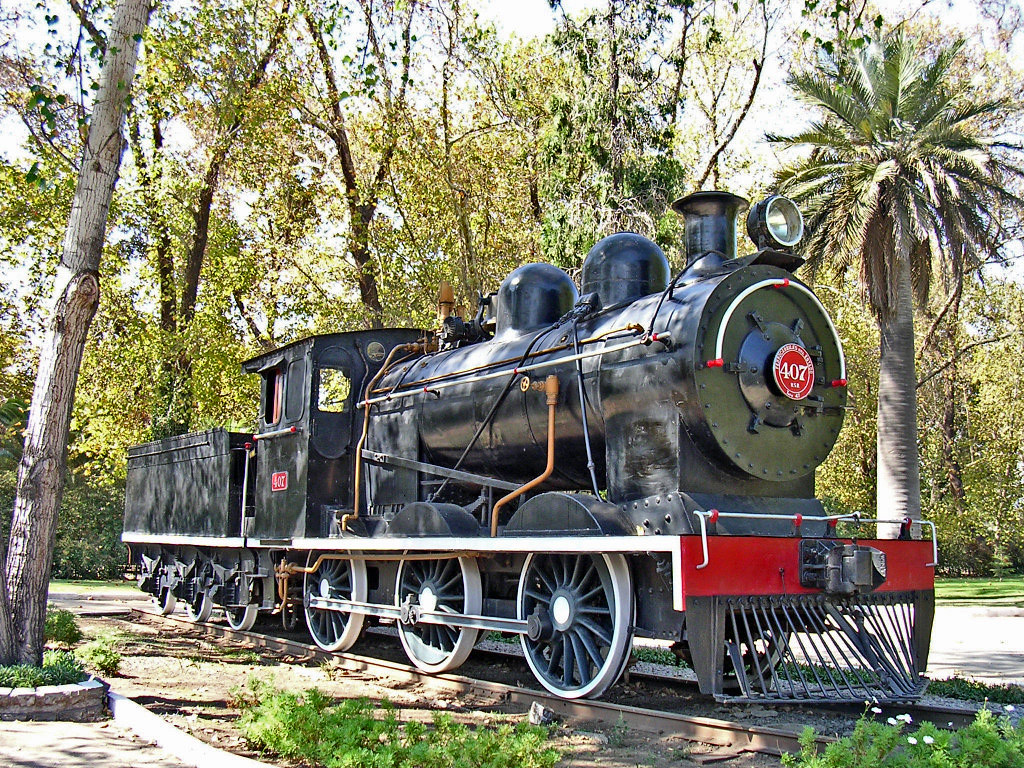"All we want to do is be able to play by the same rules as everybody else, and get back in tax breaks and grants even just a piece of what we put back into the nation."
- Martin Clement, CEO of the Pennsylvania Railroad
TRUMAN INTRODUCES NATIONAL TRANSPORT ACT
Ever since the Berlin Blockade of 1948, war among the former Allies has seemed the more likely. The result was culminating in troop mobilizations on both sides, before the crisis was finally resolved. The crisis was still on many people's minds even in to 1949. As such, President Truman recently met with a number of key advisers to assess the situation and the response to future Soviet provocations, should they occur.
The conference, attending by such people as General Patton, who has a cane after a near-fatal jeep accident in Europe on December 21, 1945, has determined in order to make sure the military is ready in future provocations, all modes of transportation shall be modernized to the fullest extent possible. Senator Alben Barkley has since been commisioned to introduce our Transportation Act of 1949. Which among other things will instill a cabinet-level Department of Transportation, with expert John Barriger as the first Secretary of Transportation.
This new DOT will oversee the new Federal Railroad Administration as well as the ICC, along with newly created Federal Aviation, Highway, Transit, and Maritime administrations. Each of these would act as a funding conduit for their respective modes' programs. The FHA will oversee the construction of a system of four-lane superhighways to link the country's major urban centers by road. To pay for them, all of the roads must be toll roads. The Interstate highways will be going around cities instead of directly through them with feeder roads carrying traffic into the cities from the Interstate highway. We will also being making sure the highway looks spiffy, with plants in medians and along the sides. As well as bridges and underpasses, signage, and opportunities for drivers to stop to appreciate scenic views where possible.
As for air travel, the FAA will be responsible for spearheading the construction of a whole new system of airports across the nation, to ensure that the most modern aircraft available can link all major towns and cities. As of now primarily aiming for major transport centers like New York, Chicago, Atlanta, and Los Angeles.
Rail Travel, however, has the biggest changes."
- New York Times: August 12, 1949
----------------------------------------------------------------------------------------------------------------------------------------------------------------------------------------
The railroads took advantage of the new support immediately. The airlines were becoming a thing- all those bomber pilots now behind the yokes of newly-built DC-6s and Constellations, and air travel cut transcontinental travel from days to hours. Not even a crack train could pull that off- and the airline didn't need Pullman contracts, and to drag around non-revenue cars. The trucking lines were taking the merchandise freight business right from under them- and didn't need unionized brakemen, switchmen and the rest of the army of personnel a railroad needed. Who was paying for all that? The railroad's taxes. To add insult to injury, and trains had to play by rules that their competition didn't. Why? Because they got some land grants 100 years ago. Being that America is the land of private enterprise. What did they do about it?
Lobby, lobby, lobby. The railroads quickly realized they would need NEED friendly legislators on their sides. Democrats to protect the jobs they'd create, and Republicans to defend themselves as the symbols of free enterprise against Big Government. The Barkley Act was that necessary shot in the arm to the railroad industry, which had been starting to falter. Under these rules, railroads would be allowed both substantial loan guarantees and slightly reduced legislation. The plan's railroad provisions had strings attached however - Washington wanted the money spent on improvements to the railroad lines themselves.
This provision would lead to many railroads adapting the Southern Pacific's method of improvements. The initial funds would go mainly to upgrading the tracks themselves as well as maintenance facilities. Equipment that could be replaced or upgraded more incrementally were given second priority. However, that did not stop the tide of diesel and electrics from making slow by increasingly sure inroads. Railroads recognized the need for more bang for their buck, and to automate the process more. Many initially considered electrics, but were still very expensive.
Few options were "sexy" like huge steamers or fast electrics, but ultimately diesels we where value lied. But railroads realized the unions would cry blue murder due to the lay-off of numerous steam employees. As such, displaced firemen and brakemen were almost immediately given engineer or conductor training. Which took less time than training a new hire from scratch, and slowed down hiring.
As for the railroads replacing locomotives, the railroads focused on replacing locomotives that were cheaper to replace. This was where the road-switchers made their big debut on American railroads. They could operate from either end just as well, and so did not need turntables or massive wyes. On their own they more horsepower than an 0-6-0 switcher with a smaller crew to boot, and power that one could reliably put down.
The ALCO RS-1 was one of the first successful road switchers. Such as the case that today, Chrysler-ALCO still builds diesels to a similar design.
Railroads looked towards rolling stock that were the least maintenance intensive and most durable, standardized cars. It was decided to have everything on roller bearings, so no hotboxes means trains could get longer, and didn't need a head end brakeman. When placed behind a diesel or electric, crews shrank down to four or three, a 40% savings per train right there on crew. For perishable freight, all-metal, plug-door insulated box cars replaced icehouses and top-ice reefers with mechanical reefers. Other cars were set up for standardization - 52' mill gondolas, 50' grain hoppers, 50' and then 60' tankers, 40' standard and 60' hi-cube boxcars, and 75' hi-cube end-door boxcars with circus style ramps for autos. Ore jennies and open hoppers came as needed. Cabooses became all metal, roller bearing, radio-equipped, and began to run through on a pool system. This would be a durable fleet that rolled fast and smooth with minimal breakdowns.
Many other railroads on the other hand sought to electrify, and began to buy shares in power utilities and coal mines. Those that sought electrification made the contract to haul coal to the plant, and make back some traction power expenses too. Not only did electrics have the most power, they have the fewest parts that can break. Indeed, this model would be followed by many railroads that intended to electrify. Such as the Pennsylvania, Rio Grande, New York Central, Southern Pacific, and most importantly the Milwaukee Road...
OOC: Special thanks to
@TheMann,
@WaterproofPotatoes, and
@Joe Bonkers for allowing me to use their ideas.



